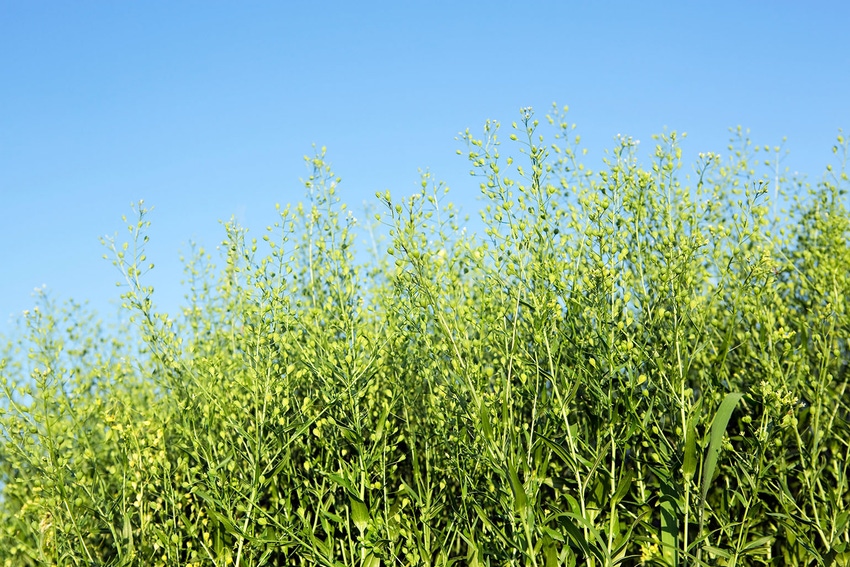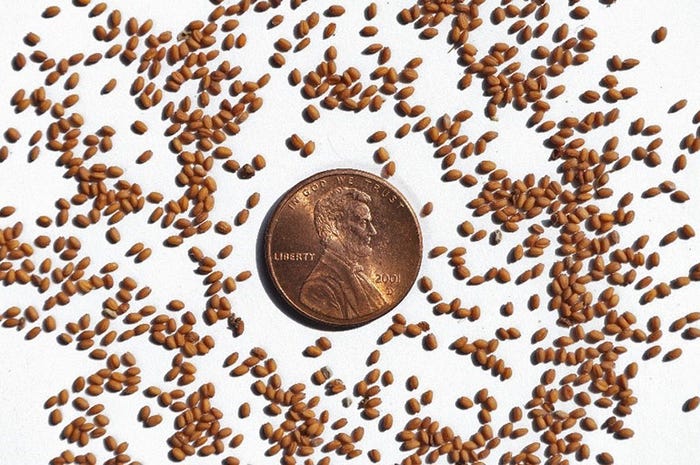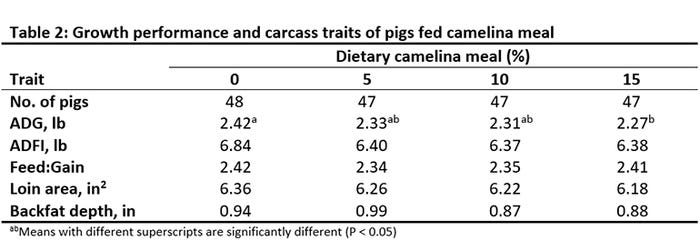The high protein content of camelina meal suggests it might be a reasonable replacement for soybean meal in swine diets.
April 11, 2019

By Lee Johnston, Yuzhi Li and Adrienne Hilbrands, University of Minnesota West Central Research and Outreach Center; Ryan Cox, University of Minnesota Department of Animal Science; William Lazarus, University of Minnesota Department of Applied Economics; Wayne Martin, Minnesota Extension; Frank Forcella and Russ Gesch, USDA-ARS North Central Soil Conservation Research Lab
Row-crop farmers have become more interested in the use of winter cover crops as a way of conserving soil outside of the normal growing season. Winter cover crops prevent wind and water erosion of valuable topsoil during the long period from fall harvest until new crops can be established on the landscape in the next spring. Winter cover crops confer long-term benefits to the farmer by conserving topsoil but increase annual costs for seed, tillage and planting of the cover crop.
Crop farmers might be more willing to include winter cover crops in their farming system if they could recoup some of these short-term costs at the same time they are benefiting from the long-term conservation of topsoil. Winter camelina is a cover crop that is being considered by farmers for use in their cropping systems. Winter camelina is an oilseed crop that is planted in the fall and produces seed in the early summer. Typically, the seeds are crushed to extract camelina oil and the resulting meal, that is relatively high in protein, could be used for livestock feed.

The high protein content of camelina meal suggests it might be a reasonable replacement for soybean meal in swine diets (Table 1). However, some varieties of camelina contain elevated concentrations of anti-nutritional factors such as glucosinolates, tannins, erucic acid and trypsin inhibitors that might reduce feed intake of pigs and depress nutrient digestibility of diets. Furthermore, camelina meal has lower lysine concentration compared to soybean meal. High anti-nutritional factors and lower lysine concentration limit inclusion of camelina meal in swine diets. So, camelina meal likely fits in swine diets as a partial but not a complete replacement for soybean meal.

Knowing these characteristics of camelina, we evaluated camelina meal in diets for growing-finishing pigs from 75 to 270-pound body weight. Experimental diets contained 0, 5, 10 or 15% camelina meal. Pigs were housed in an environmentally-controlled barn on totally slotted floors in pens of eight pigs. We assigned six pens to each level of dietary camelina for a total of 192 pigs in the experiment. Growth performance of pigs and quality of the carcasses produced from all pigs after harvested were the primary response variables.

Average daily weight gain of pigs was depressed by about 5% for pigs that consumed camelina meal (Table 2). There were no statistically significant differences in daily feed intake, feed efficiency or carcass traits among pigs fed the four experimental diets. We expected to observe an increasing reduction in feed intake as concentration of camelina meal increased in the diets. But, feed intake of pigs was similar among all levels of dietary camelina meal. This may suggest that the anti-nutritional factors were not present in high concentrations in the camelina meal we used.
We observed no effect of camelina meal on drip loss of loin chops, pH of loin, marbling score of chops or quality of pork bellies. These traits suggest that the eating quality of pork from pigs fed camelina meal in this experiment will be similar to that from pigs fed corn-soybean meal diets. We are currently summarizing data collected from consumer taste panels to verify this perception.
In summary, it appears that camelina meal can be a useful replacement for soybean meal in diets for growing-finishing pigs when used at low levels (10% or less) in production systems that have some flexibility in pig flow. From a whole farm perspective, farmers need to balance the potentially increased cost of the marginal reduction in growth rate when feeding camelina meal against the long-term benefits of improved conservation of topsoil with winter camelina as a cover crop.
This project is supported by Organic Transition Program (Award# 2017-51106-27129) from the USDA National Institute of Food and Agriculture.
Sources: Lee Johnston, Yuzhi Li and Adrienne Hilbrands, University of Minnesota West Central Research and Outreach Center; Ryan Cox, University of Minnesota Department of Animal Science; William Lazarus, University of Minnesota Department of Applied Economics; Wayne Martin, Minnesota Extension; Frank Forcella and Russ Gesch, USDA-ARS North Central Soil Conservation Research Lab, who are solely responsible for the information provided, and wholly owns the information. Informa Business Media and all its subsidiaries are not responsible for any of the content contained in this information asset.
You May Also Like



